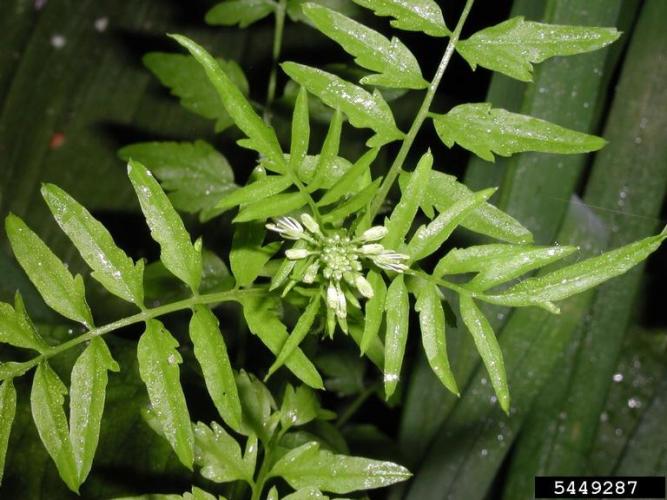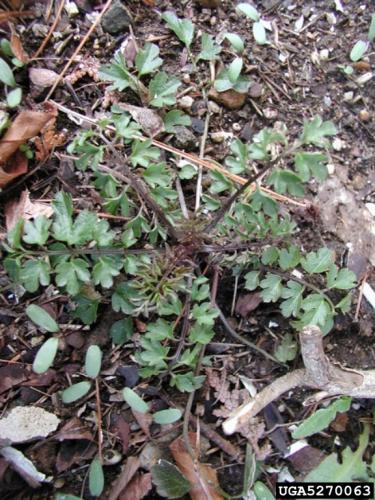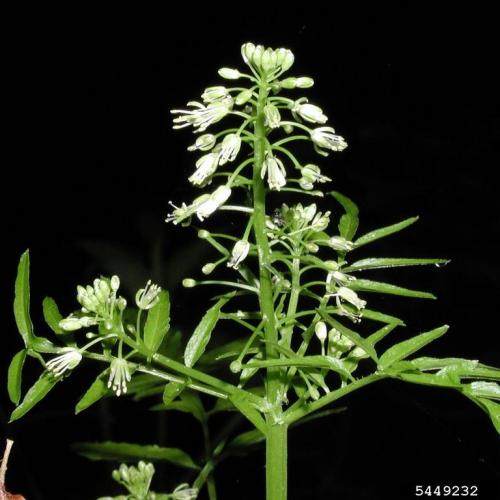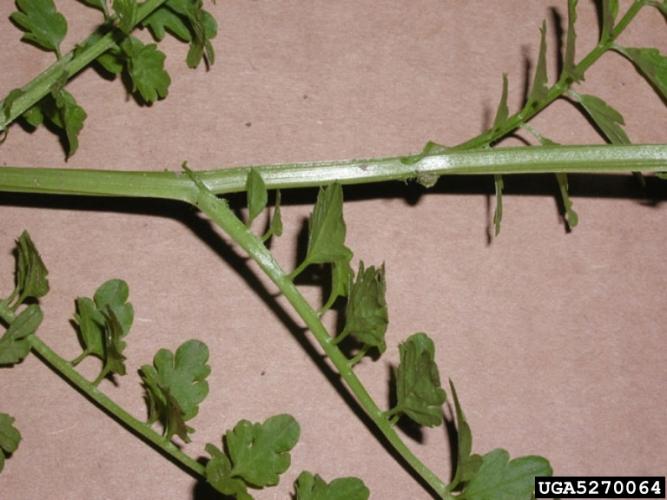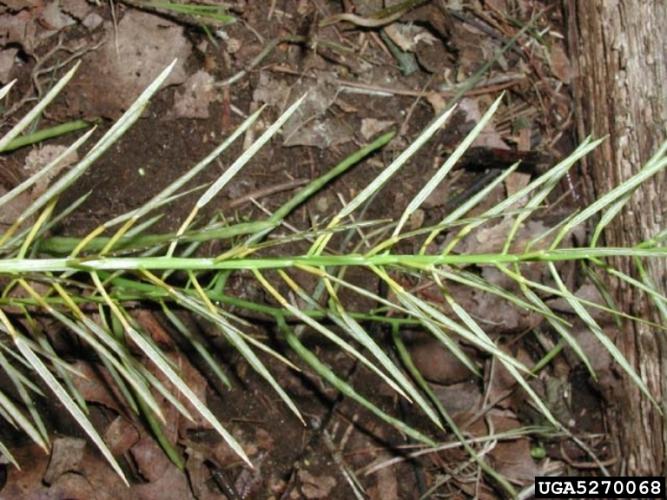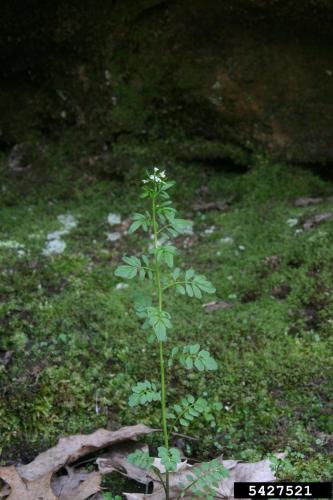Narrow-leaved bitter-cress
Identification
Appearance
Cardamine impatiens is an herbaceous plant which can be an annual or biennial. It can grow to be 2 feet in height. The stem is erect and glabrous. It is somewhat shade tolerant, so it does well in forest edges or dappled sunlight. It also does well in areas that have moist soil.
Foliage
The leaves (6-20) are thin and membranous. The basal rosette of leaves are pinnately divided. Each leaf has 3-11 leaflets with rounded lobes. The leaves along the stem are also pinnately divided, with sharply toothed or lacerate leaflets. These leaves are sagittate auriculate (a pair of fleshy blunt projections turned downward) at their base, which is an important diagnostic characteristic.
Flowers
The plant blooms from May to August and its white flowers are small, being up to 0.1 inch long.
Fruit
The slender siliques (a type of fruit) ripen from May to September. They are 0.6-0.8 inches long and there are 10-24 seeds in each of them which shoot out from the dry fruits.
Biology
This is considered a watch list species.
origin
It is not known how narrow-leaved bitter-cress came to the United States from Europe. However, the first record of the plant in New England was from Peterboro, New Hampshire in 1916. The plant then appeared in Connecticut, followed by a subsequent spread across Connecticut, and later reports from Massachusetts (1991), Vermont (1992), and Acadia National Park in Maine (1994).
habitat
Early successional forest, forest edges, floodplain forest, herbaceous wetlands, rivers and streams, roadside, vacant lots, yards, and gardens.
life Cycle
Narrow-leaved bitter-cress is an annual or biennial plant that can grow up to two feet in height. The plant’s small white flowers bloom from May to September.This plant is able to spread easily due to its seed-shooting ability. Each flower contains ten to 24 seeds. Seeds are also spread by water and can stick to clothing and animals.
ecological threat
Narrow-leaved bittercress produces many seeds per plant. It can form dense stands invading woodland habitats and outcompete native species.
Vermont Distribution
Citations
photo credit
Narrow-leaved Bitter-cress, 5449287, Leslie J. Mehrhoff, University of Connecticut, Bugwood.org
Basal rosette, 5270063, Leslie J. Mehrhoff, University of Connecticut, Bugwood.org
Stem morphology, 5270064, Leslie J. Mehrhoff, University of Connecticut, Bugwood.org
Infructescence, 5270068, Leslie J. Mehrhoff, University of Connecticut, Bugwood.org
Flower, 5449232, Leslie J. Mehrhoff, University of Connecticut, Bugwood.org
Pennsylvania Bittercress, 5427521, Chris Evans, University of Illinois, Bugwood.org
information credit
Center for Invasive Species and Forest Health, Cardamine impatiens
GoBotonoy, Cardamine impatiens
Invasive Plant Atlas of New England
Minnesota Department of Agriculture
Pennsylvania Department of Conservation and Natural Resources
